This post may contain affiliate links. When you click an affiliate link, we may earn a small commission on qualifying purchases, at no extra cost to you. Also, please check for opening times, restrictions, weather, etc., on the days of your trip. We do our best to keep the post updated, but these things can change quickly.
I am sure seeing the Aurora Borealis (Northern Lights) is definitely on the bucket list, not just for adventure lovers and travel seekers but for almost everyone who has heard or seen about this phenomenon in movies, the internet, or books. Isn’t seeing the green light dancing across the night sky fascinating? Watching the Northern Lights was definitely on my bucket list, like everyone else’s. But it was also one of the most stressful trips I had ever planned.
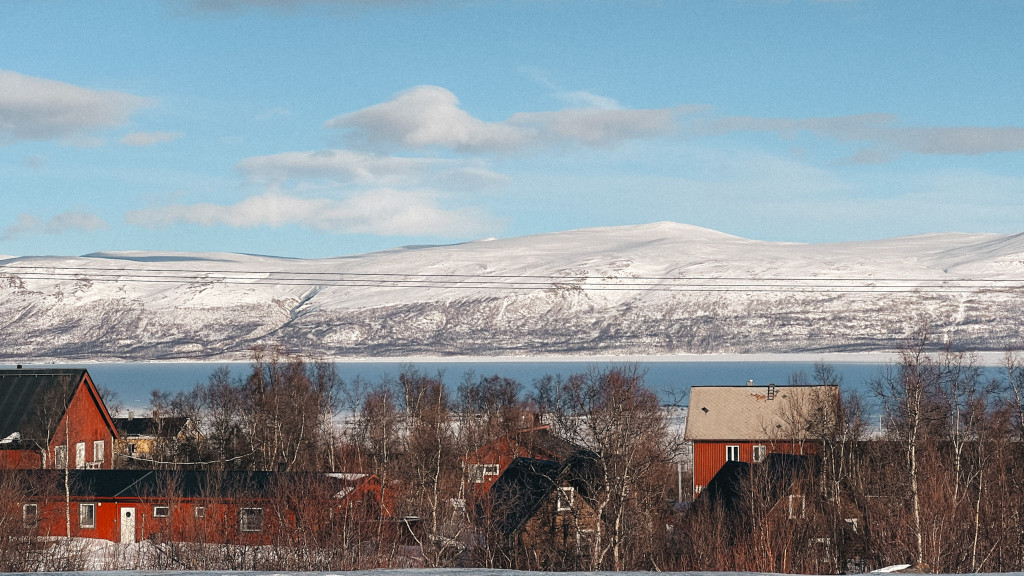
The combination of uncertainty, harsh climatic conditions, exorbitant prices, and the distance (unless you already live near the Arctic Circle) makes it hard to plan. But it need not be so hard for you, as I have already spent so many hours researching through the sea of information to get you everything you need to know for planning your trip.
Although this guide focuses more on seeing the Northern Lights in Abisko in Sweden, most of it would still apply if you plan your trip to Norway or Finland to see the Aurora.
What are the Northern Lights or Aurora Borealis?
You probably already know the Northern Lights, aka Aurora Borealis, as the spectacular display of bright colors, mostly green, but also hues of pink, purple, and blues dancing in the night sky. But understanding why this happens and why we see this only in the polar areas can help keep our expectations in check and plan your trip accordingly.
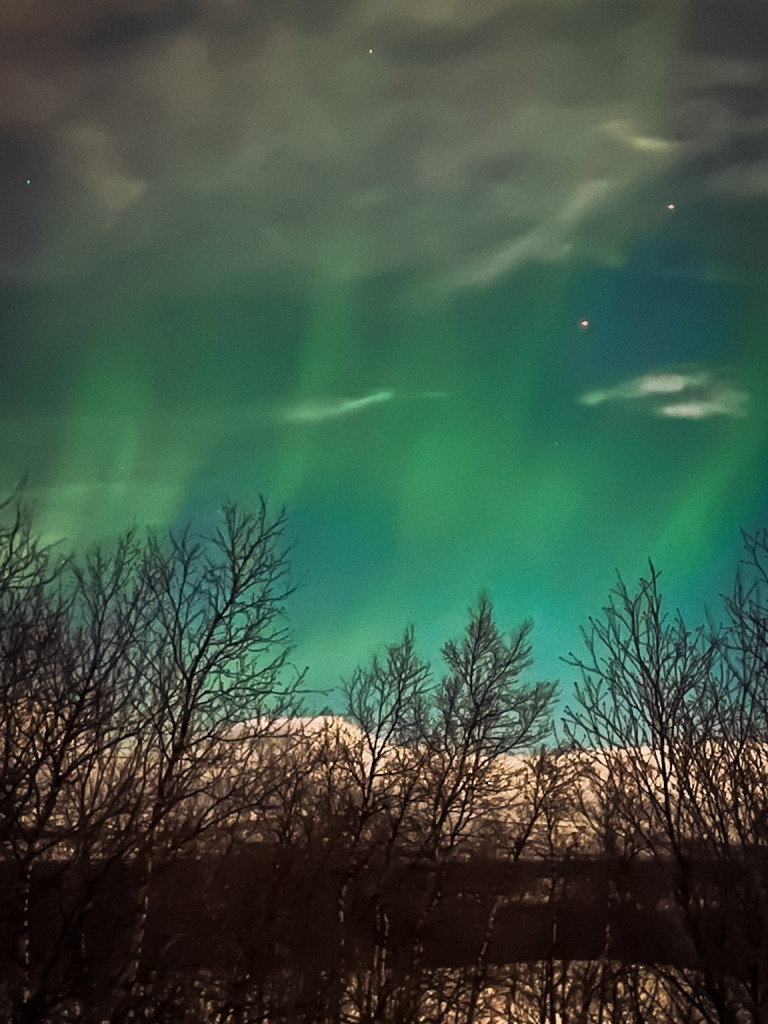
It all begins with the Sun (yes, the Sun!), which is not only just a source of light and warmth but also a massive generator of solar wind—a stream of charged particles, primarily electrons and protons, hurtling through space. When these charged particles from the Sun smack into Earth’s magnetic field, they’re funneled towards the poles, thanks to its shape.
As these solar particles collide with gasses in Earth’s atmosphere, they charge up the atoms, kind of like exciting a glow-stick. When these atoms calm down again, they release light, creating the mesmerizing colors of the Aurora. The color we see depends on the type of gas interacting with the particles. Oxygen gives us green and red (oxygen at high altitudes), while nitrogen adds blue, pink, and purple hues to the mix.
Psst! Here is a little insight from one of our Northern Lights guides we met on our trip. The blue tint of Aurora is the rarest to see, and he said that in his 10 years of chasing the lights almost every day, he has witnessed blue lights only once. (So, if you happen to see blue lights on your trip, consider yourself extremely lucky).
The Aurora can be seen close to both poles. The lights seen near the north pole are called Aurora Borealis, and the ones visible near the southern hemisphere are called Aurora Australis.
I don’t want to get too technical into it, but it is good to understand some science behind what we see (expect to see). Being able to experience this extraordinary phenomenon depends on a lot of factors.
Why Should You See the Northern Lights in Abisko?
Abisko, Sweden, isn’t just another spot on the map when it comes to hunting the Northern Lights. Tucked away above the Arctic Circle, this little slice of wilderness holds a few tricks up its sleeve that set it apart from other popular Aurora viewing locations.
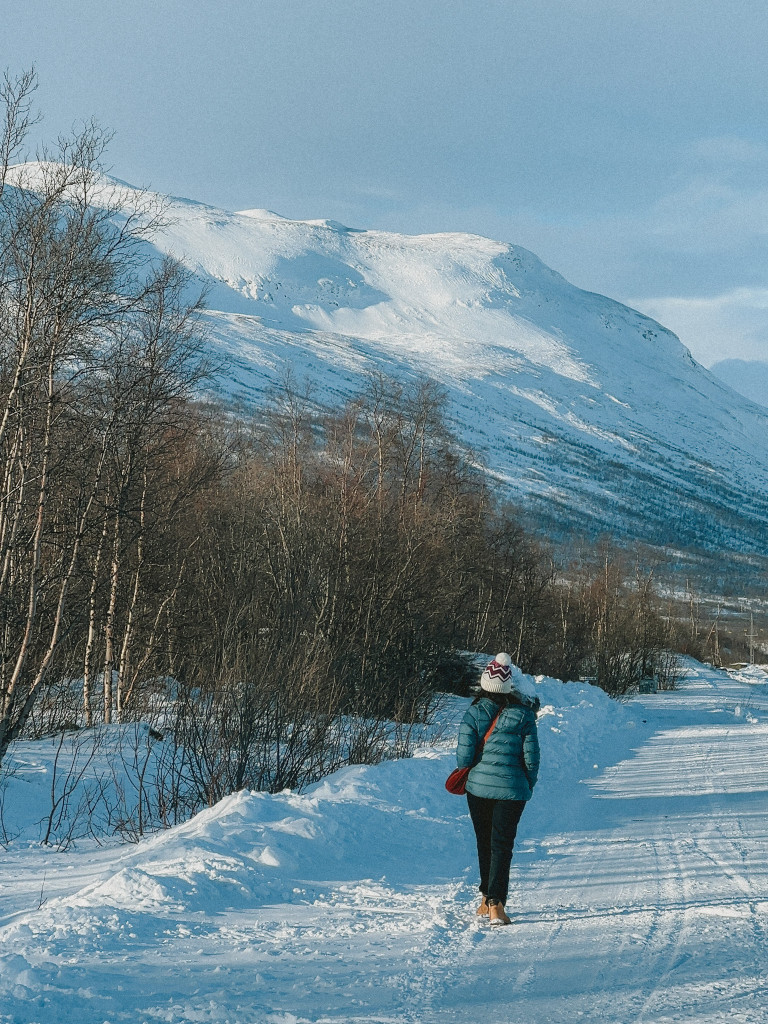
First off, there’s something magical about Abisko’s sky. Thanks to its unique microclimate, the area boasts one of the clearest skies in the Aurora belt (no actual magic, though). Surrounded by mountains, Abisko keeps clouds at bay, offering more clear nights than you’d dare to dream of in typical Aurora destinations. More clear nights? More chances to see the Northern Lights. It’s as simple as that.
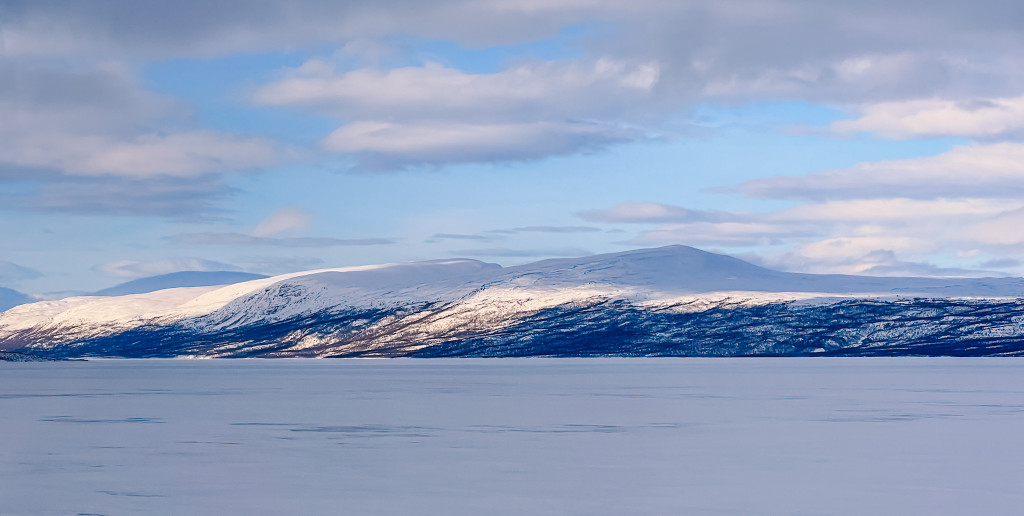
If you have searched for information about Abisko, you would have already come across the phenomenon called the “blue hole” of Abisko. No, it’s not a portal to another dimension. This phenomenon is a patch of sky over Abisko that tends to remain clear regardless of surrounding weather conditions, tremendously increasing your chances of viewing the Northern Lights in Abisko. It’s all thanks to the surrounding topography that channels away moisture-laden air.
The microclimate of Abisko (Abisko National Park) is because of its geographical location, surrounded by mountains on most sides, including its famous Mt. Noulja and other tall peaks from the Arctic wilderness in Norway. The western winds from the Arctic Ocean tend to tear away the clouds when they hit the tall peaks surrounding the national park, creating a peephole into the clear sky.
Good to know! Abisko’s blue hole and microclimate are very real. However, it occurs when the winds blow from the west, which is the case predominantly. But there are days when the winds blow in from the east or all directions, trapping the clouds. Anything is possible in the Arctic wilderness, but Abisko’s climate gives you a higher chance of clear skies than other places in the Arctic Circle, making it special.
Psst! Since Abisko is already further away from all the hustle and bustle, a lot of nights, you could spot the Northern Lights in Abisko from the window of your room or right outside your stay without having to drive far.
Now that we have seen a little about the Northern Lights and why Abisko is a special place to view the auroras let’s help you plan the trip. I have tried to put as much information as needed to plan your trip all by yourself. All this information will still apply to you when planning any Northern Lights trip, not just in Abisko.
When is the Best Time to Visit Abisko?
Do you know that auroral activity occurs throughout the year in the aurora oval? However, the daylight makes it impossible to see the Northern Lights, which is why you need to visit these regions when it has longer and darker nights.
The optimal period for observing the Northern Lights in Abisko extends from late September through early April. During these months, the prolonged darkness of the Arctic winter provides the perfect backdrop for the Aurora Borealis.
Start of Season (Late September to November)
This initial phase offers an intriguing preview of the Northern Lights, with longer nights setting in. The unique opportunity to see the auroras reflected in the still-unfrozen lakes adds a mesmerizing element to the experience.
Peak Season (December to March)
This period is considered prime time for Aurora viewing. The extended darkness, coupled with the enchanting snow-covered landscapes, enhances the visual spectacle. The festive ambiance of the holiday season further enriches the overall experience (thus making it more expensive).
End of Season (April)
As the season draws to a close, the diminishing night hours still provide ample opportunity to catch the Northern Lights in Abisko. However, it is also worth checking the availability of tours and activities as most winter activities usually start closing up.
What Should You Consider Before Visiting Abisko to See the Northern Lights?
For those planning to visit, a few considerations can further enhance your experience. Also, I would like to add my own observations (including some insights from the tour guides) regarding a few beliefs.
Lunar Phase
If you did some research, you would have already heard that planning your trip during/closer to full moon phases reduces your chances of seeing the Northern Lights. If you are wondering if it’s true or not, then the answer is both.
The Moon does not have any impact on the intensity of aurora activity. So, if the activity occurs, you will definitely be able to see it.
However, the moonlight could be considered a form of light pollution, making the sky appear brighter than usual, slightly diminishing the effect of the Northern Lights.
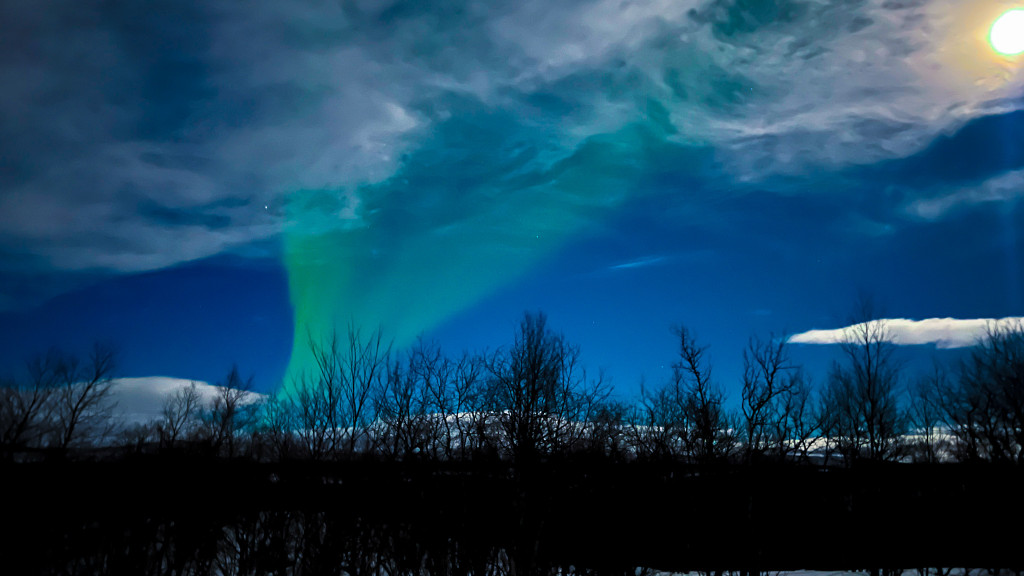
I visited around the full moon cycle and saw the Northern Lights dance alongside a fully lit moon. It was as spectacular as I imagined it to be. (But yes, the backdrop was more of a dark blue instead of pitch-black skies). So, if you are a little concerned, planning your trip around new moon phases is always advantageous.
Psst! The main reason I had to mention the moonlight and its effect on your viewing chances is that if you are in a situation where you do not find stays available during the new moon phases but you would very much like to visit, then I just want you to know that it just changes your experience a bit but does not reduce your chances of seeing the lights. (If the lights appear, you will see them.)
Weather Conditions
Clear skies are crucial for successful Aurora viewing. Monitoring local weather forecasts can help you plan activities to coincide with the best conditions. However, the weather is highly unpredictable, as are the forecasts, which change every minute. You will know if you observe the forecasts for a week. There is only so much you can do to be prepared for it. My best advice is to be prepared to face the worst weather.
Duration of Stay
Given the inherent unpredictability of the Northern Lights, extending your stay in Abisko can greatly increase your chances of witnessing this awe-inspiring spectacle. It is advised to stay at least 4 nights in the same place (Abisko or any other place where you are planning your trip) to increase the chances of seeing the lights. With Abisko, I think 4 nights would definitely be a safe choice.
Psst! I have compiled some of the FAQs at the end, so keep reading.
What is the Best Way to Get to Abisko?
The fastest way to get to Abisko would be to take a flight to Kiruna and then take a bus to Abisko. But it depends on different factors and what would work best for your situation.
By Flight
As I said, it would be your fastest option and may even be cheaper if you travel as a couple or solo. You could fly to Stockholm and take a flight to Kiruna from there, which would take only around 1.5 hours. You can take a bus from the Kiruna Airport directly to your stay in Abisko.
You can use Visit Abisko to book your bus transfer from/to Kiruna airport. They operate based on flight timings, so you won’t be too early or late for your flight.
By Train
You can take an overnight train from Stockholm to Abisko in night train (train 94), which takes about 17 hours (if there are no delays). Delays may be more common during winter when the weather is too unpredictable.
Psst! You can book your tickets here.
By Car
If you are on a road trip, you can take a rental car from Stockholm or even from Norway (Narvik) and enjoy the ride. You could also arrange to pick up a rental car in Kiruna and enjoy your trip.
Our Experience With Train and Flight Journeys to Abisko
We made sure to travel by train and flight to give you a better idea of what you can expect.
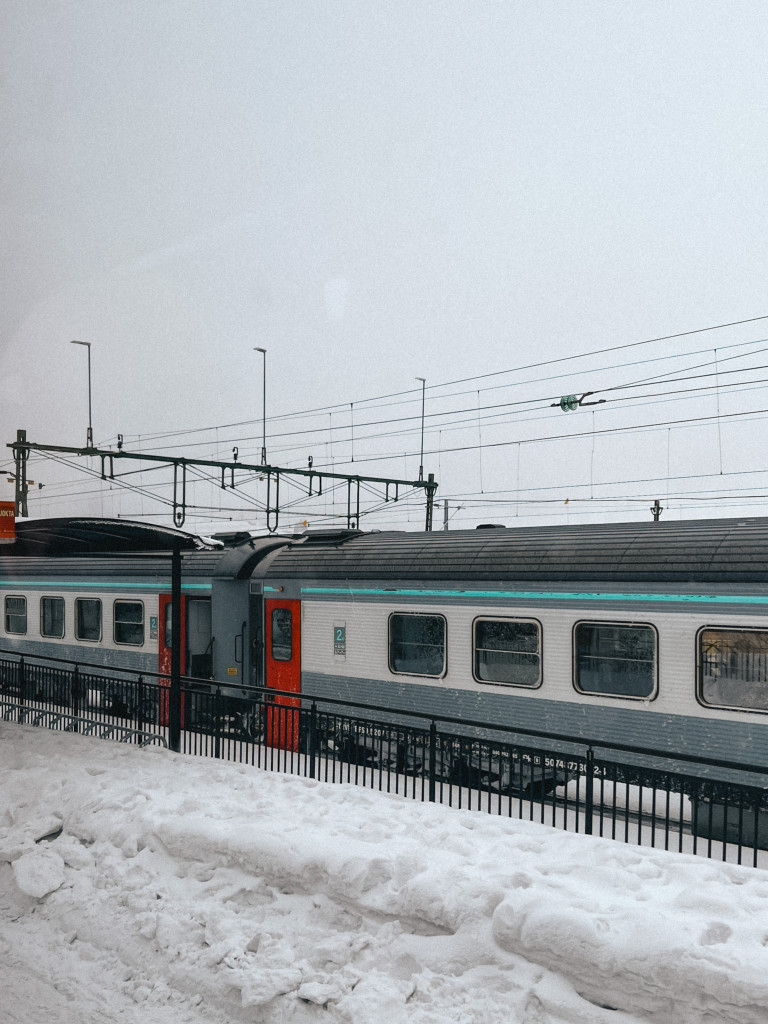
Train
We booked the sleeping car to ensure comfort and privacy, especially since it was a very long ride. Each sleeping car can accommodate 1-3 passengers, and you can book your own. We were 2 people, and the price difference wasn’t much, so we booked one. It was pretty comfortable but nothing fancy.
There were 2 berths and a middle berth that we could set up if needed; pillows and blankets were provided, along with a few bottles of water. The cabin also had a small wash basin, which was convenient. Also, we get a card to use the common shower. It also has a place to stash your luggage (but if you are carrying bigger suitcases, it might be a challenge to store them). The train also had wifi and a restaurant area where you could buy dinner and breakfast.
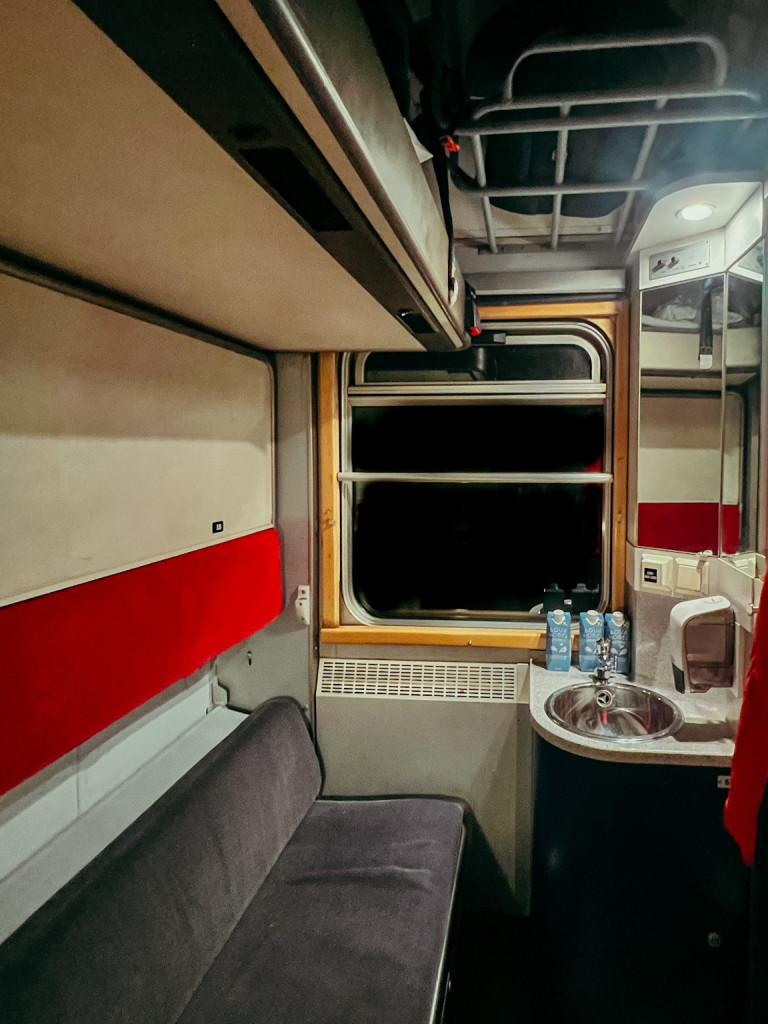
Good to know! The train tickets aren’t cheap, but if you are traveling using an interrail pass, then probably only a few extra bucks for the seat reservation would be required.
In our case, a significant delay was expected due to the conditions on the day of travel. Hence, they informed the passengers to move to a different train from Luleå, which is around 5 hours from Abisko. They had to clean the sleeping cars for the next night’s journey, so all passengers were asked to move to a different train with only seating cars. This means there are no assigned tickets, and the entire train’s worth of passengers need to run carrying their luggage to find a desirable place on the next train for the remainder of the journey (not fun to run with your big suitcases in the snow, is it?).
And that was not all. Due to some track problems, they had to stop the journey in Kiruna, and we had to hop on a bus to go to Abisko. Some people even had to take two bus transfers.
Despite all the inconveniences and delays, we didn’t have to wait for our transfers, which were already waiting for us at the station. The instructions were quite clear as to what had to be done next.
Flight
We pre-booked a bus from our stay in Abisko to Kiruna Airport, which will take around 1.5 hours. The bus arrived in time and came to our reception to pick us up. (highly recommend). The Kiruna airport is quite small, with just 1 gate, so the security line was also small. We had enough time but not too much time at the airport. We reached Stockholm in about 1.5 hours. Our flight back home was not until the next morning, so we decided to stay in a hotel at the airport. We had a smooth flight back.
Conclusion
We traveled light with just our backpacks, so making multiple unexpected transfers during our train ride wasn’t a hassle. Still, I wouldn’t prefer doing this if I had more luggage. Also, the train tickets were not cheap, we wanted to try this as an experience plus to see lovely scenic views from the train (which we did), but I wouldn’t say it was worth all the effort and money.
The flight ride was convenient, faster, and smooth (no complaints). And train tickets for both of us cost the same for the flight and hotel stay in Stockholm. So, to me, flight seems to be a clear winner. But if you are traveling with an interrail pass, then the train would be the cheapest option for you. I recommend taking the sleeping car over the seater compartment as the journey is long.
Now that we are in Abisko let’s get to the interesting stuff about how to plan your Northern Lights tour and more.
Everything You Need to Know About Northern Lights Tours in Abisko
If you do not have experience chasing the Northern Lights and are visiting to get your best chance of viewing them, joining a Northern Lights tour would be the best way.
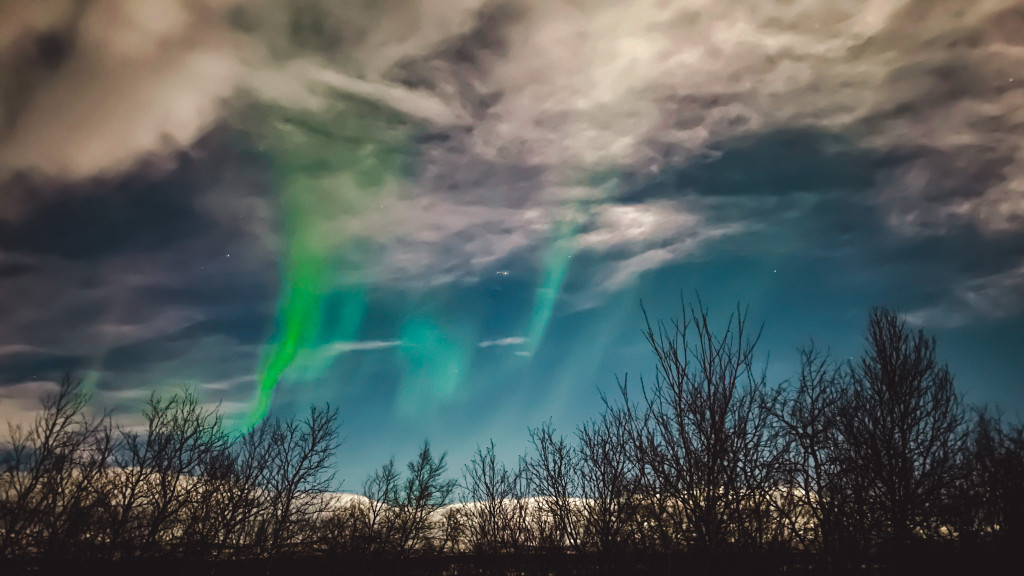
Why You Should Join a Northern Lights Tour?
- They are aware of the best viewing points.
- They are experienced in driving in crazy weather conditions and know all the dangerous routes to avoid.
- They know where the teepees are in the wild so that you can light a fire and get warm while waiting for the lights to put on a show.
- You can sit back and relax while they take the stress of driving you to the best possible locations.
Which Northern Lights Tour Should You Choose in Abisko?
We tried two companies but preferred taking tours with the LightsofVikings. I have linked the exact tour that we took and a few other options provided by the same company for you to choose from based on your preference:
The Longest Northern Lights Tour in Abisko with Dinner
Our Experience
We could not see the lights on our first day of the tour, but it was due to bad weather and not at all the fault of the tour providers. We, in fact, checked with other companies to see if they had any luck on the given night. So be prepared for the worst-case scenarios as well.
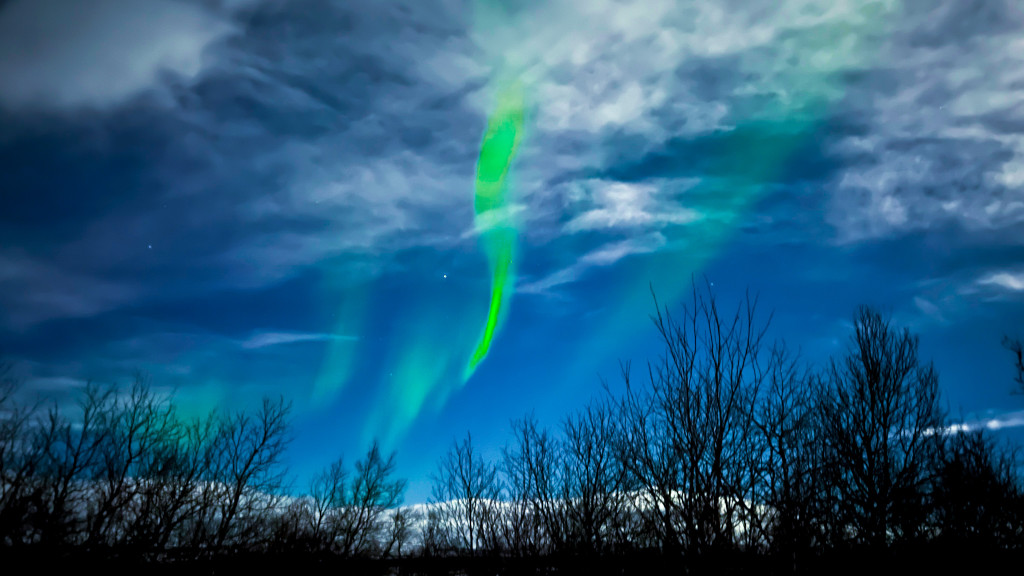
On the second night, we went with a different company on the longest Northern Lights chase, which started with a dinner included as part of the tour. The dinner also happened to be in the same place we stayed. We met with a few other travelers with whom we will be joining the chase, and we got to talk over dinner. It was fun!
We started our journey right after dinner, and we had to drive a bit far to get away from the clouds, but the weather was better than the day before. Our guide (also our driver) stopped at multiple places to check for the lights until, in one spot, we found the lights. It was a small stroke almost invisible to the naked eye, but then the activity improved, and we enjoyed the show for at least an hour.
The tour guide took photos for us and helped others who wanted to take photos with their own camera. A few other tour groups later joined us in the same spot, but we were definitely the first. After a while, we didn’t go back right away; we traveled a bit further to a different spot to see the lights.
The guides were very excited and wanted us to see the best show. If the group is as enthusiastic as the guide, you will definitely have a great experience. They also give you winter overalls and a warm drink to survive the cold. We were also given chocolates and cookies while we were watching the lights.
I have listed some of the tour options below, which you can choose from if the above-recommended option isn’t available:
I would recommend at least staying for 3 nights. Book the 3 Day Northern Lights Pass for the best chance if possible. If you are lucky, you will get to see them all three days. Trust me, you will never get over seeing the lights. It is just spectacular, and you would only want to see them more.
What are the Best Viewing Locations to See the Northern Lights in Abisko?
I have also compiled the best viewing points for the adventure-loving folks who would love to chase the lights on their own.
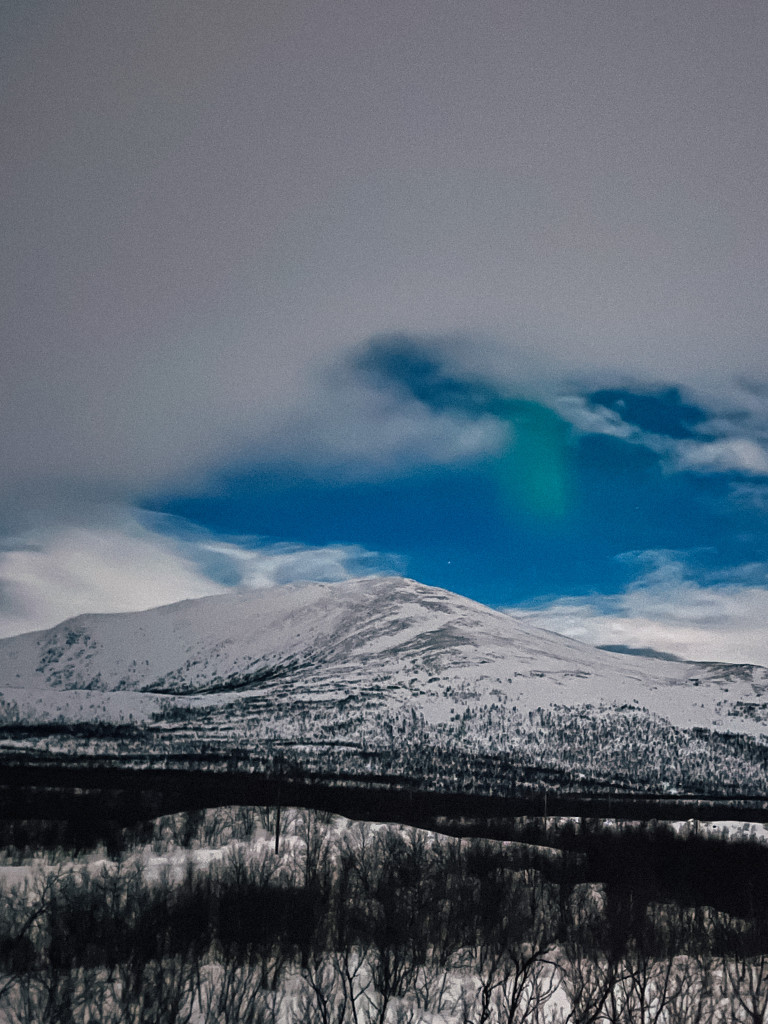
Abisko National Park
The vast wilderness of Abisko National Park offers dark, clear skies away from light pollution, making it an ideal spot for Northern Lights observation. It is just so vast that you could find more than one good spot here.
Psst! Consider the area around Lake Torneträsk, where the lake’s reflective surface can double the visual pleasure, weather permitting.
STF Abisko Mountain Station
Situated within Abisko National Park, the Mountain Station is a convenient place to stay and a great spot to watch the Auroras, especially from the comfort of their Aurora viewing room.
Aurora Sky Station
Accessible via a chairlift from the STF Abisko Mountain Station, the Aurora Sky Station is positioned on Mount Nuolja. It’s renowned for being one of the best places in the world to see the Northern Lights.
Good to know! Dress warmly for the chairlift ride and the viewing. The Sky Station also provides warm clothing rentals.
Björkliden
A bit further afield, located a short drive from Abisko, Björkliden provides another excellent vantage point for Aurora viewing. Its mountainous terrain and ski resort offer a different perspective on the Northern Lights.
Torneträsk Lake
The frozen expanse of Torneträsk Lake, especially in the winter, provides a serene and reflective surface for the lights, offering unique photo opportunities.
Psst! Everyone wants to spot auroras in the best viewing spot, surrounded by nature, mountains, and frozen lakes. But also watch out when you are driving out there to your spots; you might end up seeing the lights dance from a parking spot, too. With all the snow cover, even empty parking lots seem beautiful at night if the auroras appear.
How to Check Aurora Forecasts When Chasing the Northern Lights?
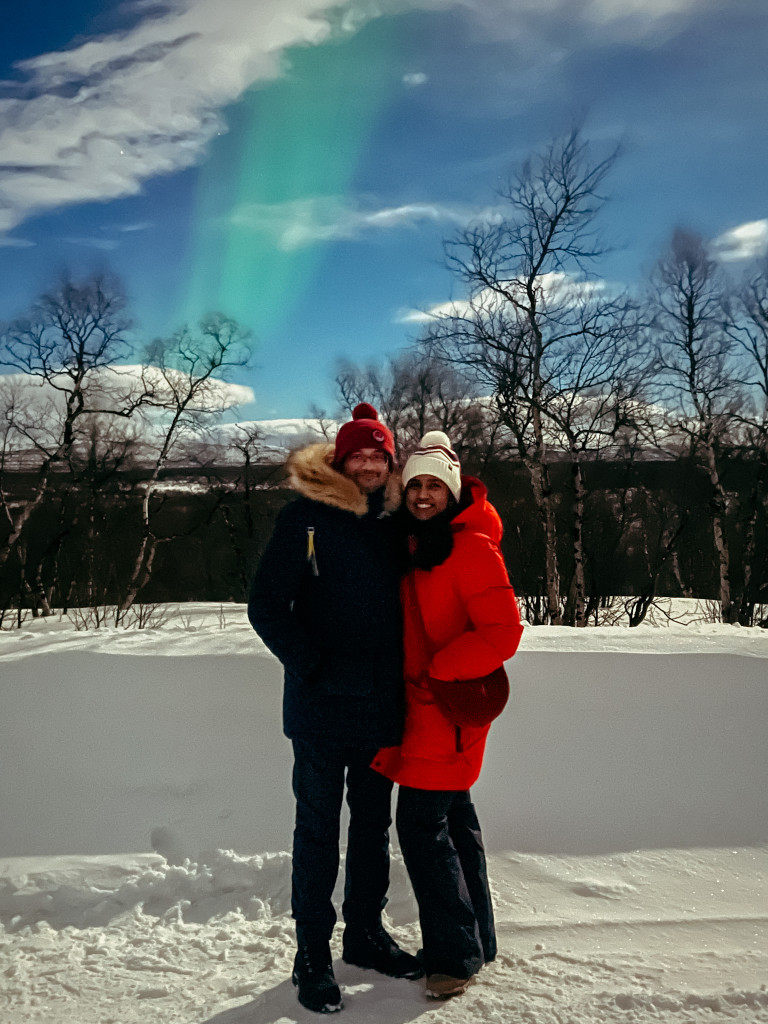
The Aurora activity in a specific area depends on many factors. Although you have a lot of tools and apps that can give a forecast, it keeps changing even on the day you check the activity. I suggest not relying on the forecasts to plan your travel dates; instead, check the other factors to select the dates.
So does it mean the forecast apps are a bunch of lies, and we shouldn’t trust them at all? No! That’s not the case as well. Use your forecasts app not before your Northern Lights chase but during the chase to see what is happening in the sky, as that is more reliable than checking for a future time.
Aurora forecasts predict the likelihood of Northern Lights activity based on solar wind and geomagnetic activity. These forecasts look at the interaction between charged particles from the Sun and Earth’s magnetic field, which is what causes the Aurora’s glow. The key components of these forecasts include:
- KP Index: A scale from 0 to 9 that measures geomagnetic activity. Higher numbers indicate stronger geomagnetic storms and a greater chance of seeing the Aurora. Locations closer to the poles can witness Auroras at lower KP numbers.
- Solar Wind: Forecasts monitor the speed and density of solar wind particles, as faster and denser solar winds can lead to more dramatic Aurora displays.
- Geomagnetic Storm Alerts: These alerts indicate periods of high geomagnetic activity, suggesting a higher likelihood of Northern Lights occurrences.
What are Some Apps and Tools for Real-Time Aurora Activity Tracking?
Several apps and tools have been developed to provide real-time tracking and forecasts for Aurora activity, making it easier for enthusiasts to plan their viewing. Some of the most popular include:
- Aurora Forecast: Provides Aurora predictions and real-time solar activity.
- Space Weather Live: Offers real-time data on solar activity, geomagnetic storms, and Aurora forecasts.
- My Aurora Forecast & Alerts: A user-friendly app that provides Aurora predictions, current KP index, and cloud cover information.
A tool that can be really handy is webcams. There are quite a few webcams in Abisko and Kiruna where you can check to assist you during your chase:
How Solar Cycles Impact Aurora Visibility?
If you are someone planning your Northern Lights trip in 2024 and 2025, then you would have already heard that these are the best two years to see the Northern Lights in the next 11 years. It is both true and not true. Allow me to explain.
The Sun goes through approximately 11-year cycles, alternating between periods of high and low solar activity known as solar maximum and solar minimum. During solar maximum, increased sunspot activity leads to more frequent solar flares and coronal mass ejections (CMEs), resulting in stronger and more frequent Auroras. Conversely, Auroras may be less frequent and less intense during solar minimum, though they can still occur.
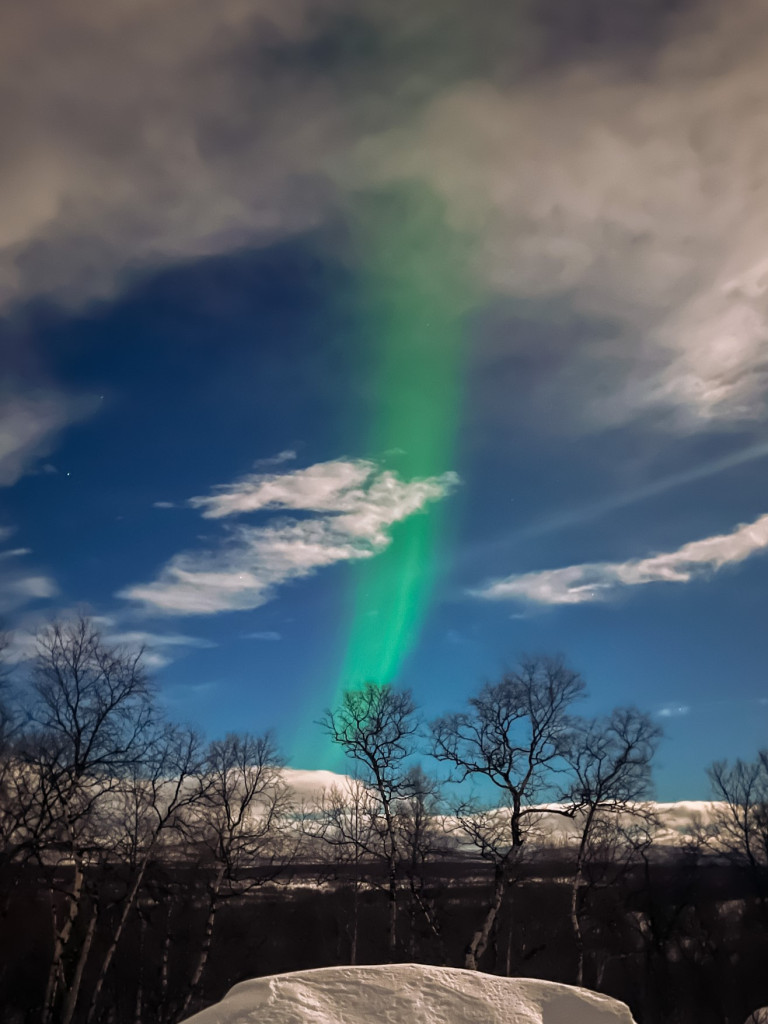
Understanding these cycles can help set expectations for Aurora viewing. However, it’s important to note that significant Aurora displays can happen at any time during the solar cycle, especially during periods of strong geomagnetic activity.
I heard from one of the Northern Lights expert chasers that this year (2024), the number of intense aurora shows was comparatively less in March. (So much for solar maximum huh!)
Honest advice! 2024 and 2025 are definitely good years to see the lights, but that doesn’t mean you cannot see them later. So don’t stress yourself too much if you are unable to plan a visit in this time period. But if you can, then you should definitely give it a go.
Photography Tips for Capturing the Northern Lights on Phone
I am no camera expert. I don’t even own a professional camera, so not the right person to give you tips, but if you are someone like me with an iPhone (or any other phone with a good camera), then I have some tips for you.
- Use a tripod for your phone. It makes a huge difference, as holding your phone steady to capture the lights in freezing weather is not easy.
- Use the night mode of your phone, and adjust the settings in the night mode to increase the time interval to the maximum or at least 5-7 seconds. This means you have to hold your camera without shaking it for the entire period, hence the tripod. This way, you can capture the night sky and the auroras even with your phone.
- If the aurora activity movement is fast, you need to reduce the time to less than 5 seconds, or else the picture can become too blurry. Adjust your time interval and keep trying until you get what you want.
A professional camera will definitely be the best choice, but that doesn’t mean you cannot take good pictures with your phone. Keep experimenting with your settings, and you will get there.
Where to Stay in Abisko?
Now that we have read everything about the Northern Lights in Abisko, let’s get to the accommodation. I have added all the best stay options available in Abisko, so you do not need to worry about checking the reviews.
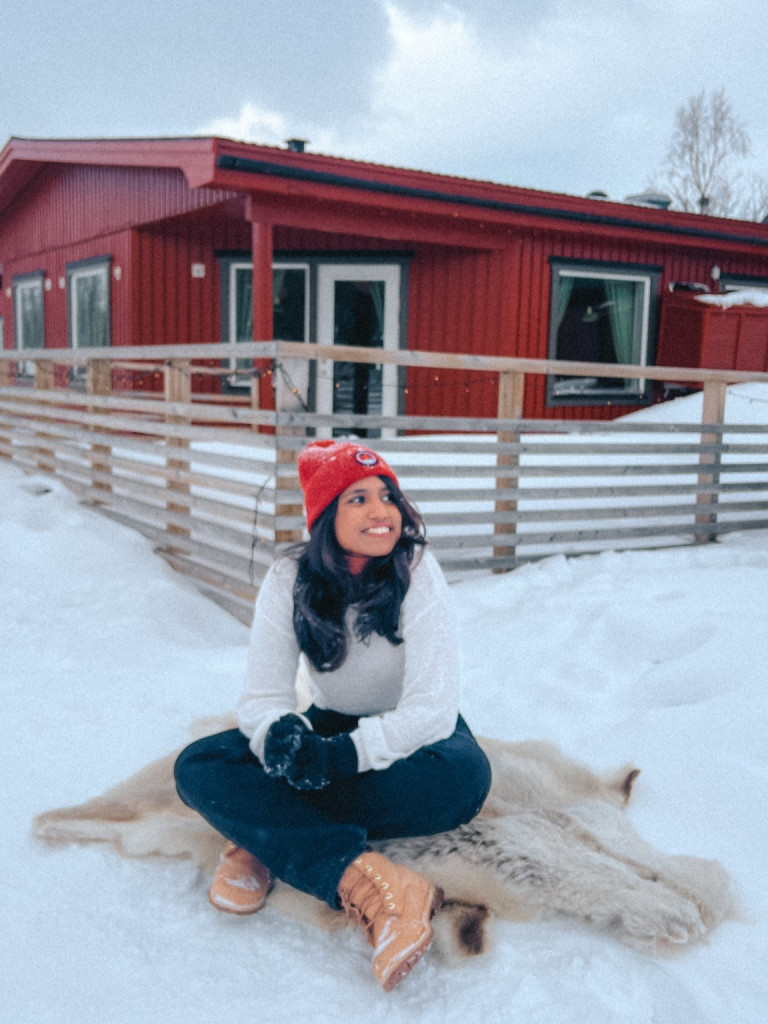
Here is a list of all the good accommodations in the area which you can book for your trip. We stayed at Abisko Mountain Lodge, and it was just perfect. It is close to the Abisko Ostra station, has the perfect wilderness cabin feel, and has a nice restaurant. It also has a sauna, and the lounge area is perfect for relaxing while waiting for your tour company to pick you up.
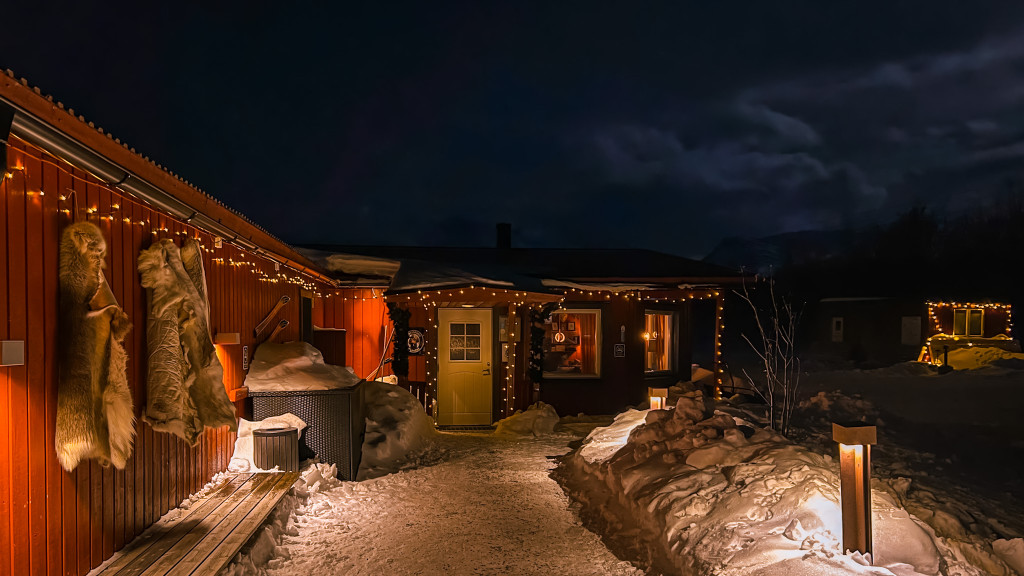
Other accommodations that are equally good:
- STF Abisko Turiststation (located right outside Abisko National Park)
- Abisko Guesthouse & Activities
- Abisko.net Hostel & Huskies
Want to explore more options in Abisko? Check out more stays in Booking.com. We use Booking.com to book all our stays and have always had a good experience.
The next on the list is the most important part of the entire guide.
What are Some Additional Activities and Attractions in Abisko?
I can’t stress enough the importance of planning additional activities other than chasing the Northern Lights in Abisko. I know it is the main reason why you are planning a trip above the Arctic Circle. But there is so much more to see and do in this region, and it is wise to plan more than one type of activity to make the best use of your money and time.
I will add a detailed post on other activities you can plan during your trip to Abisko, like husky sledding, hiking in the Abisko National Park, skiing, and many more (keep your eyes open for our next post).
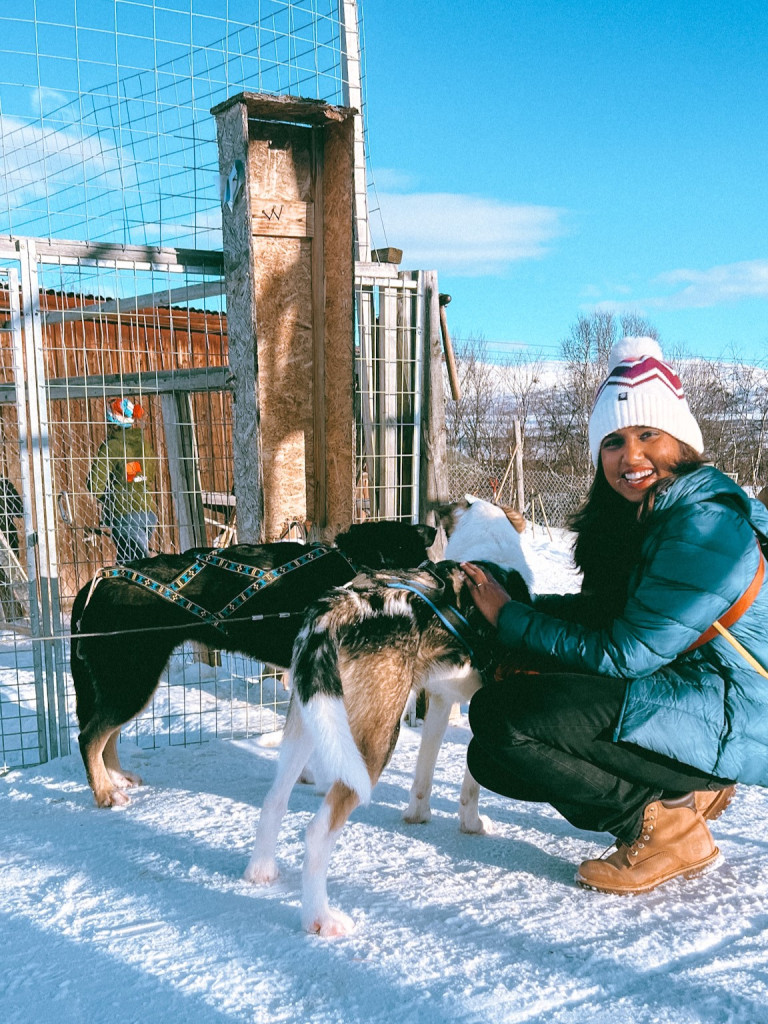
FAQs for Enjoying the Northern Lights in Abisko
Unlike my other posts, I have added an additional section for all the FAQs. I have put some of the questions I had in mind while planning my trip. But the only way to make this section more useful is by adding all your questions here so I can add them to this section along with the answers.
When is the best time to see the Northern Lights in Abisko? Is there a magic window?
Well, the period usually stretches from September to the first week of April. However, during harsh winters in December and January, it could be too cold, and the weather might be too severe, so plan for more days. If you want to see the Northern Lights in Abisko with the reflections in the lake, then you need to head before the lake freezes.
What should I pack for my trip to Abisko?
Remember to dress like an onion. Layers are your best friend. Instead of wearing one heavy jacket (which might also work), choose to dress up in layers. Don’t forget to pack extra socks and gloves, and ensure your top layer is waterproof. (jacket, pants, and boots). I will soon add a detailed post on this.
Can I see the Northern Lights in Abisko without booking a tour?
You most definitely can. You could rent a car, use some trusty apps, stalk the webcam feeds, and keep driving until you find the spot. But if you ask me, do this only if you have experience driving in harsh winters and snowy roads. It can get pretty extreme very quickly.
How is the food scene in Abisko?
There are a few restaurants near the STF Turiststation and Abisko Mountain Lodge. If you are on a budget, then it’s good to remember that the restaurants are expensive. Just don’t expect a 24/7 pizza delivery service.

If you are staying in an Airbnb or a hotel with a kitchen, then you could cook your own meals on a budget. There is a supermarket near Abisko Ostra station where you can load up on snacks and groceries.
If you prefer to eat vegetarian or vegan food, restaurants have at least one option on the menu to accommodate your needs. The food in Abisko Mountain Lodge was super delicious. They also offer soup lunches.
Do I need to book in advance to see the Northern Lights in Abisko?
Yes, definitely, book everything in advance. The tours get sold out quickly during the peak Northern Lights seasons, as are the accommodations (at least the good ones). So do it ASAP!
Can I plan a trip to Abisko without renting a car?
Yes, you most definitely can. You can book different tours for the activities, and most stays that I have listed are closer to the station and more popular among the various tour providers, so you will have pick-up and drop options for all the tours. You can book your airport ride with pick up from your stay, making renting a car unnecessary.
And there you have it, folks – your compass, map, and mildly amusing travel companion rolled into one for embarking on the ultimate Northern Lights quest in Abisko. Whether you’re a seasoned Aurora chaser or a newbie drawn by the allure of the night sky’s disco lights, Abisko promises an unforgettable adventure in one of the coldest regions of our world. Just remember, the Northern Lights are like the world’s most ethereal celebrities: unpredictable, breathtaking, and worth every second of the wait.
So, pack your warmest socks, charge your camera, and prepare your best “oohs” and “aahs” because you’re about to enter the VIP lounge of Mother Nature’s nightly show. Between chasing the celestial dance, sipping hot chocolate in the Arctic chill, and possibly convincing a reindeer to take a selfie with you, Abisko is more than a trip—it’s a tale for the ages.
I would love to hear about your experiences and see your pictures of the Northern Lights (tag me). Don’t hesitate to reach out to me if you have any questions or if you need help planning your trip.
Safe travels, Aurora hunters! May the skies light up for you in the most spectacular of ways.

